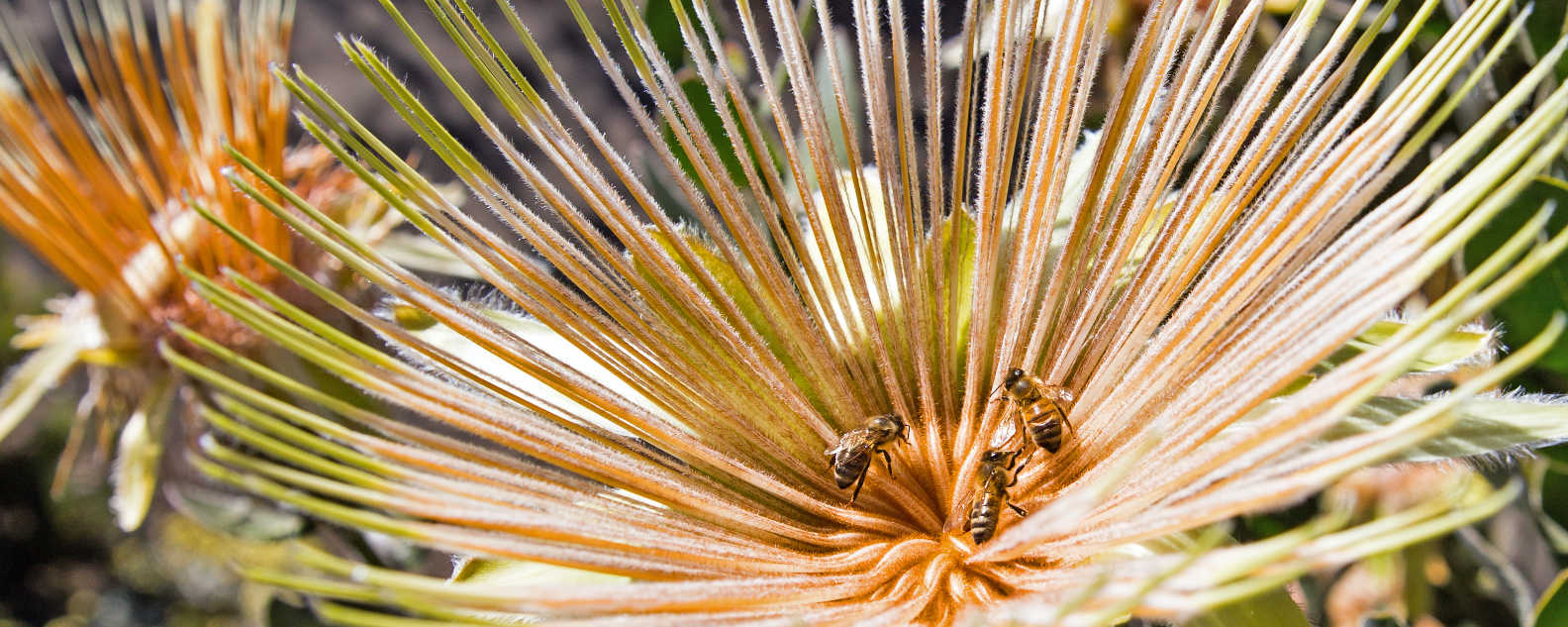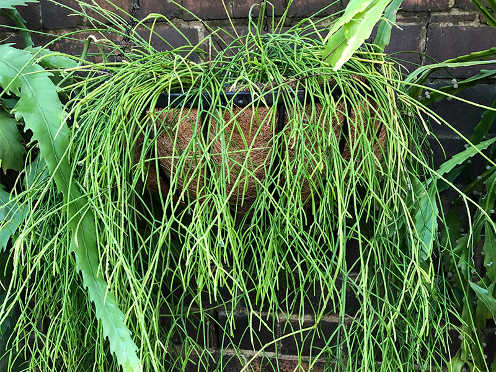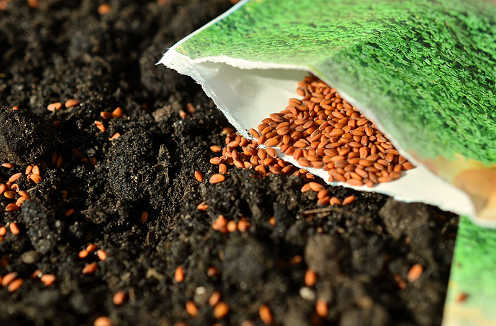Growing Proteas
Grow colourful Proteas to thrive in your home garden with advice from the experts at the Botanic Gardens of Sydney.

Learn how to grow colourful Proteas to thrive in your home garden.
With over 1,600 species, Proteas are a southern hemisphere flora boasting a beautiful goblet-shaped flower with distinct colour, size, and shape variations. A superb addition to your home garden, the tough and hardy evergreen Proteas produce a nectar that attracts birds, bees, and insects bringing harmony to the natural ecosystem.
Belonging to the Proteaceae plant family that includes Australian Banksias, Grevilleas and Waratahs; Proteas are native to southern Africa. Their name originates from the Greek God Proteus who could change his form at will, inspired by the variety of forms that this stunning plant can also take flourishing both in our Botanic Gardens and your own home garden.
The best time to see Proteas in bloom is in late autumn to winter at the Blue Mountains Botanic Garden Mount Tomah.
1. Selecting your Proteas
- With so many varieties available, seek advice from your local Botanic Gardens of Sydney expert or nursery to discover which type of Protea grows best in your area.
- You can purchase Protea plants at the Blue Mountains Botanic Garden Mount Tomah Shop.
2. Planting your Proteas
Season
- Plant in autumn or spring so your Proteas absorb maximum sunlight.
Soil and drainage
- Most Proteas prefer well-drained and acidic soils.
- Avoid heavy clay soils if possible, otherwise improve drainage with a free draining garden mix. You should either create a raised garden bed (minimum height 30-45cm) or install underground drainage pipes.
- For best results, allow plenty of space between the plants for air to circulate.
- If planting Proteas in pots, pot the roots close to the top of pot.
Irrigation
- Protea root systems must be kept lightly moist until the plants are well established. This can be up to 18 months or more.
- Watering frequency will depend on soil type and climatic conditions.
- Mature Proteas only require deep watering once a week during dry spells, or once a fortnight during a dry winter.
Fertiliser
- Avoid using fertiliser when planting Proteas, particularly fertilisers containing phorsphorous, as Proteas are particularly sensitive to phosphorous. They have a fine root system (‘proteoid’ roots) that develops naturally to seek out available nutrients in the soil.
- For necessary fertilisation during early stages of growth, use an Australian native plant fertiliser and either a very mild solution of a soluble fertiliser or coated slow-release pellets with low or zero phosphorus.
- Maturing Proteas may also need fertilising if you have free-draining soil in your garden.
Mulching and weed control
- Use natural mulch of around 10cm thickness, such as leaves, wood chips or general shredded garden waste. They help to retain moisture and look great in the garden.
- Avoid fresh, young mulching materials, which tend to draw nitrogen out of the soil as they rot.
- Keep mulching materials away from Protea stems as this may cause them to rot.
Container gardening
- Grow smaller varieties in containers using a course, well-drained native potting mix.
- Keep the plants in a sunny position with plenty of air circulation.
- Avoid over-fertilising or letting the container dry out.
3. Maintaining your Proteas
Pruning Proteas
- Lightly prune Proteas during the first 12 months for good shape and to help them establish resistance to strong winds.
- Do not severely prune Mature Proteas as this may permanently damage them.
- Don't attempt to relocate a mature Protea - established proteas will die if you try to move them.
Prolong the life of cut Protea flowers
- Cut the Protea flower stems as long as possible and ensure foliage remains on the stem below the cut.
- Maintain fresh cut Protea flowers by regularly cutting 1-2 cm off the bottom of the stems and frequently changing the water.
- Add one-quarter of teaspoon of household bleach to every litre of fresh water.
- Hang flowers upside down in a dark place with some air circulation for dried arrangements. This will help to retain more colour and prevent the growth of mould.
Related resources

